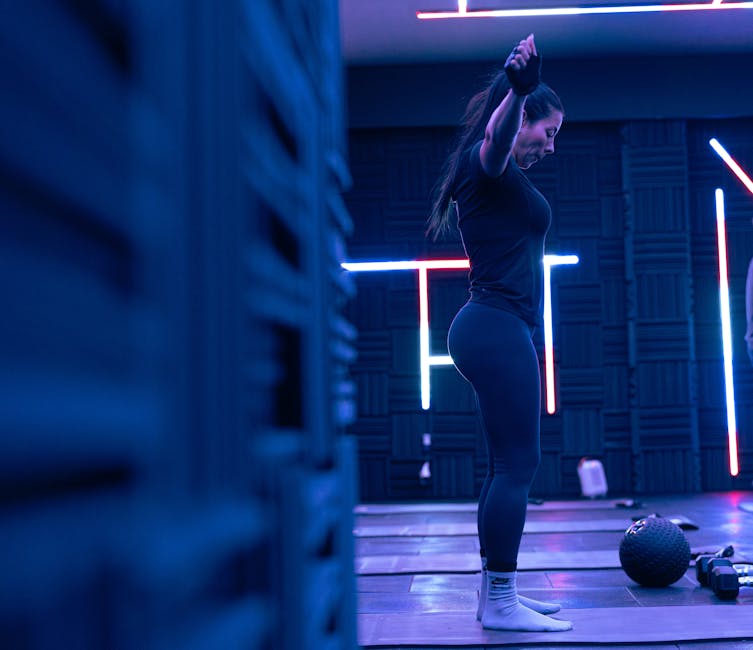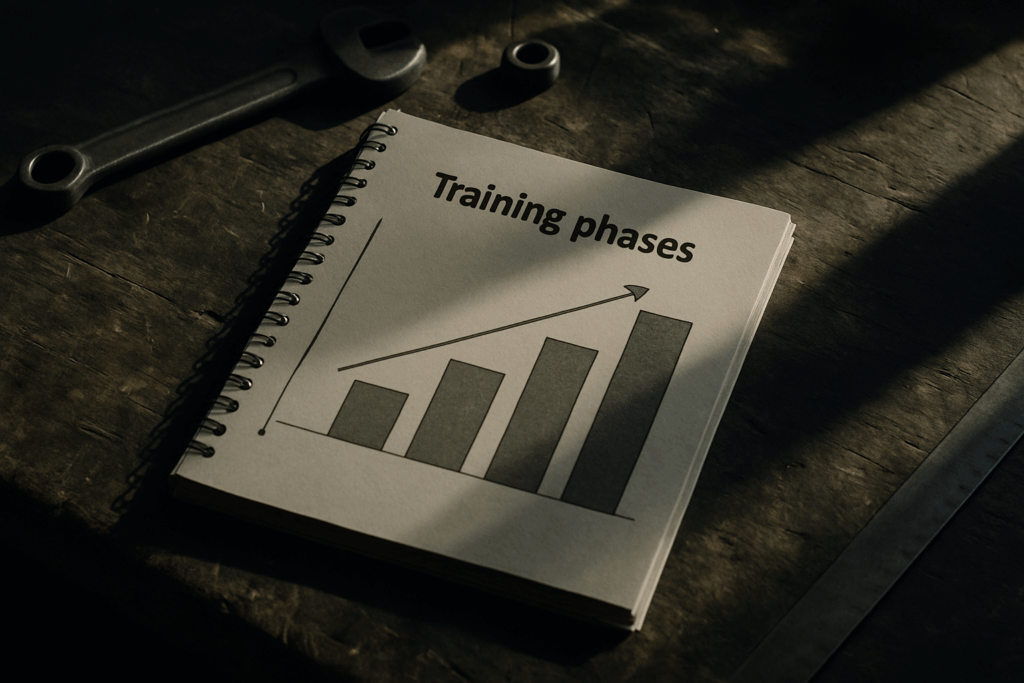What Periodization Really Means
Periodization is the structured, long term planning of athletic training. It’s not flashy, but it works. At its core, it’s about organizing workouts and recovery into distinct phases so athletes can peak at the right time whether that’s for a playoff series, a marathon, or just shaving seconds off a PR.
Why this matters boils down to three things: performance, recovery, and injury prevention. A smart periodized plan lets athletes push when it counts and rest when it’s strategic. It protects the body from burnout while also wringing out every ounce of potential during the most important windows.
Instead of going hard 24/7 and hoping for the best, periodization breaks training into cycles: build, refine, perform, recover, repeat. It’s the difference between training with a map and training in the dark.
The Phases of Periodization
Preparatory Phase: Building a Strong Foundation
This is where it all starts. The preparatory phase sets the stage for everything that comes later. The focus here is on developing general physical qualities like strength, endurance, mobility, and proper movement mechanics. Think high volume, lower intensity work. Athletes spend time ironing out weak links, building aerobic capacity, and laying down a rock solid base. It’s not glamorous, but it’s essential.
Competitive Phase: Maximizing Sport Specific Performance
With the base built, things narrow in. Volume drops, intensity climbs. Training in the competitive phase is all about sharpening the tools for sport whether that’s sprint speed, explosive lifts, precision moves, or game specific conditioning. This is when athletes move closer to peaking. Everything gets more tailored, more aggressive, and more performance driven. Recovery tools get dialed in, too, because fatigue management becomes just as important as skill refinement.
Transition Phase: Recovery, Reflection, and Regeneration
Often overlooked, this phase is where real growth solidifies. The transition phase provides the mental and physical reset athletes need to repeat the cycle. Training loads drop, but that doesn’t mean going idle. Light movement, cross training, and mobility work keep the engine idling. It’s about restoring energy, evaluating what worked, what didn’t, and getting the headspace right for the next block.
Together, these three phases form the backbone of periodization. Skip one and the whole thing loses balance. Stick to the rhythm, and progress becomes deliberate not accidental.
Types of Periodization Models
Linear Periodization
Linear periodization is the old school backbone of most training programs for a reason. You start with higher volume and lower intensity, gradually dialing up the intensity while tapering the volume across the training cycle. It’s clean, simple, and works well for beginners or athletes coming back from a break. Think: more reps and sets early on, fewer but heavier lifts closer to competition.
Nonlinear (Undulating) Periodization
Nonlinear periodization flips the script. Intensity and volume shift frequently sometimes daily, sometimes weekly. One day might be heavy and low rep, the next might focus on speed and high volume. The goal is to stay adaptable, stimulate different muscle fibers, and avoid stagnation. Best for athletes who’ve built a solid base and need variation to keep progressing.
Block Periodization
Block periodization is high focus, low clutter. Each block zeros in on one training goal say, hypertrophy, then pure strength, then explosive power. Instead of trying to do everything at once, you laser in on one objective per block, stacking adaptations over time. This model is popular among elite athletes who are zoning in on very specific performance markers.
Why Periodization Still Matters in 2026
Periodization isn’t going anywhere it’s just evolving. In today’s hyper tracked, data heavy training environments, athletes have more insight than ever. Who’s performing well under stress? Who’s burning out? Who peaked too early? The answers are no longer guesses they’re measurable.
But knowing isn’t enough. Success lies in applying that data without losing the fundamentals that work. Coaches are using wearables, sleep trackers, and HRV monitors to fine tune training phases. That data feeds into periodized plans that adapt to the athlete, not just the calendar. It means rest days when recovery lags, intensity spikes when readiness is high, and smarter tapering before competition.
Still, the bones of the system stay the same: build, sharpen, recover. Templates give structure, but customization gives edge. The best programs blend old school grit with new school insight. Periodization remains the blueprint tech just drew in the details.
Key Benefits for Athletes

When done right, periodization delivers a performance edge that’s hard to beat. First off, it optimizes muscle adaptation and strength gains by structuring when and how your body takes on stress. Instead of hitting max effort all the time, workouts build progressively and recover smart. That means muscles get stronger, not just more fatigued.
Second, it lowers your risk of overuse injuries. Repetitive strain is the slow, silent killer of athletic progress. Periodization rotates focus areas and intensity, letting your body heal while still moving forward. You’re training hard, but not breaking down in the process.
Finally, it sharpens your readiness for game time. Peak cycles are built to align with competition schedules, so you’re primed when it counts not two weeks early or a month late. It’s not magic. It’s planning. And in sport, timing is everything.
Common Mistakes to Avoid
Even with the best intentions, poorly executed periodization can undermine an athlete’s progress. Understanding the common pitfalls helps prevent plateaus, injuries, and missed performance goals.
Pushing Volume Too Quickly
Many athletes and coaches mistakenly ramp up training volume without adequate adaptation time. This often leads to fatigue, decreased performance, or even injury.
Increase volume gradually over time
Monitor for signs of overtraining, such as disrupted sleep or chronic soreness
Allow time for the body to respond to new stimulus levels
Skipping Rest Between Phases
Rest isn’t optional it’s what allows progress to take hold. Without scheduled downtime between phases, athletes risk cumulative fatigue.
Integrate recovery weeks to let the body heal and adapt
Consider active rest (light movement) instead of total inactivity
Recognize that mental recovery is just as important as physical
Overlooking Sport Specific Needs
A generic plan won’t cut it. Effective periodization considers the unique energy systems, movement patterns, and competition schedule of the sport.
Customize training based on the demands of the athlete’s sport
Include sport specific drills and conditioning
Match peak phases with key events or competitions
Avoiding these mistakes can help athletes train more intelligently and achieve better long term results.
Integrating Strength Work Into Your Periodized Plan
Strength training only pays off when it’s lined up with your broader performance goals. That means no more random max out days in the middle of a deload week. In a smart periodized plan, your heavy lifts, power movements, and accessory work have purpose and timing is everything.
Explosive lifts (think cleans, snatches, jumps) should slot in when you’re sharpening for competition. You want to build speed and neuromuscular firing without adding too much fatigue. These lifts are high intensity but lower volume, making them ideal in the late prep or competitive phase.
Foundational lifts squats, deadlifts, presses are your bread and butter during the prep phase. This is when you pile on volume to build strength and resilience. As you get closer to peak season, the load might stay high, but the reps tighten up. Muscle maintains, nervous system sharpens.
Balance means knowing when to push and when to taper. A smart athlete doesn’t just lift hard; they lift with direction.
Read more: Top 10 Strength Training Exercises for Athletes
Final Tips for Coaches and Athletes
Technology can tell you a lot heart rate variability, sleep quality, performance metrics but it can’t feel what your body feels. Use the data, sure, but keep listening to your gut. If a session feels off despite green lights from your smartwatch, make the call to adjust.
Adaptability is key. Life doesn’t always follow a 12 week plan. Athletes get sick, schedules shift, competition dates move. A good coach knows when to push and when to pull back, and a smart periodized plan builds in that flexibility. Know what phase you’re in, but don’t let the calendar boss you around.
At the end of the day, periodization isn’t a rigid system it’s a living framework. Use it to stay organized, but never let it override performance reality. The best plans are the ones that walk with you, not ahead of you.
